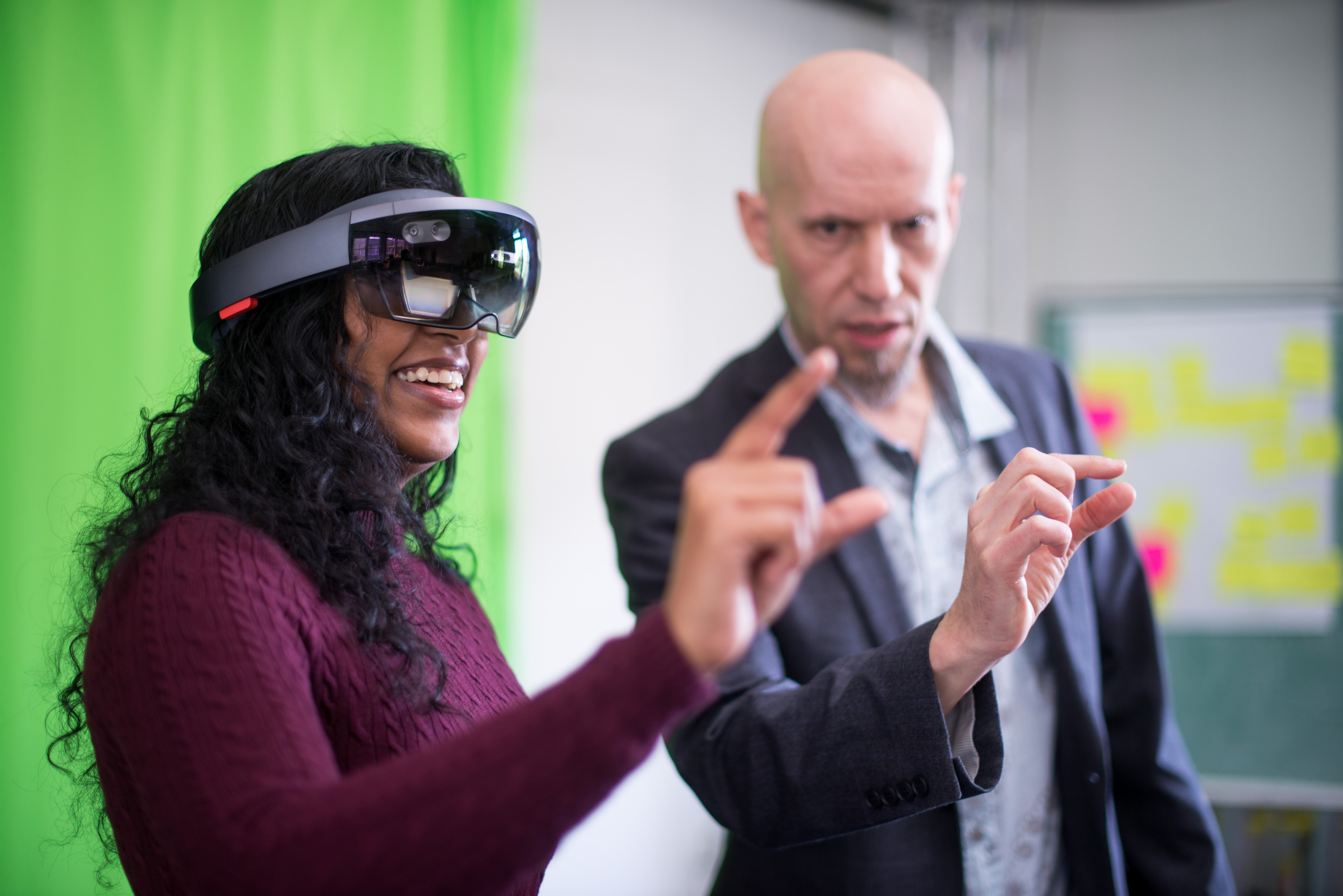

By Joel Bentley
As a designer and prop maker in the film and theatre industries in South Africa, Kimira Bhikum regularly imagined and produced new realities. Eager to push the boundaries of virtual reality, she applied to the UBC Theatre Design and Production MFA program.
When she emerged from the Skytrain underground into Vancouver’s downtown, she felt like she’d been transported to another reality. “It literally felt like I was in a different world,” says Kimira.
For her thesis project, Kimira created sets built in virtual reality to enhance communication between directors and designers laying the groundwork for a transformation about to take place in the industry.
“I wondered if I could enhance the set design process by incorporating VR in to the creative process.”
“I wondered if I could enhance the set design process by incorporating VR in to the creative process,” she says. “Set design is centered around the ‘vision,’ that elusive spark of creativity forming in the mind’s eye that needs to be expressed in the real world. I believe that VR has many process efficiencies and design advantages but, most importantly, I believe that VR could help bridge the gap between vision and expression.”
She approached one of her advisors, Professor Brad Powers (the other advisor is Professor Patrick Rizzotti). “I explained to him that I would need funding as VR gear is very expensive.”
Kimira was thankful for the support she did receive. “The Department of Theatre and Film bought the high-powered computer and the Ida Green Scholarship from the UBC Women’s Club covered the VR headset and software costs.”
With the funding in place, she purchased equipment and set to work on a prototype while learning about programming virtual reality. She was able to create a successful workflow with help from forums, tutorials and software documentation. After one month, she had created a fully modeled set design viewable in VR.
Next, she moved on to the design phase, working with director Lauren Taylor (MFA Directing ‘17) on set design for the play, Far Away by Caryl Churchill.
“[It] was above and beyond anything I could have ever imagined,” says Lauren. The VR model enhances the collaboration between designers and directors. For directors wanting to push boundaries, changes can be made with ease, without the cost limitations of building and modifying physical sets. The designer can test ideas—changing colours, adding props, increasing the scale—all in a day. This speed of change is crucial because rehearsal time on stage is incredibly limited with the standard being three weeks.
“Being able to accelerate your lived experience of how the set is going to work in three dimensions really assists the director’s process in imagining the final theatrical experience,” says Lauren. “I’ve been inspired [by Kim’s VR set] more than anything I’ve seen in a long time.”
“I think it could prove to be a game changer in how designers communicate with their collaborators.”
“There is something special at work here,” says Alan Brodie (BFA Theatre Design and Production, ’89), an award-winning set and lighting designer with nearly 30 years of experience in the industry. “That is, the ability for the human body, not just the mind and the imagination, to experience and explore the scenic environment. I truly felt that I had experienced the environment first-hand.”
Alan was one of several directors and designers to test out Kimira’s project. He sees the advantages of VR being the ability to test sightlines, scale, and audience proximity. “I think it could prove to be a game changer in how designers communicate with their collaborators.”
The VR process has the added benefit of being democratic. Designers and directors can access the same virtual set model from anywhere in the world allowing everyone to collaborate by experiencing the same environment and make design decisions together. There are no cost limitations for added collaborators: additional users can access the model via an online portal, regardless if they have a VR headset or not. When Kimira showcased her thesis at the IAST 2018 symposium, there was a buzz among students and veteran theatre professors alike, who described this process as “the future” of theatre set design.
After graduating with her MFA this May, what’s next for Kimira? “My goal for the future is to hone my skills as a set designer and master of my art. With my diverse cultural background and strong beliefs, I wish to contribute my creativity and uniqueness to the industry.”
Learn more about the MFA program in Theatre Design and Production


